The untamed beauty of Haida Gwaii, inhabited by the Haida since the beginning of time, leaves a lasting impression on both visitors and locals. Come to the edge of the globe with curiosity and respect, and you will always be made to feel welcome. Camping in Haida Gwaii is the best way to explore the edge of the world.
Haida Gwaii: Canada’s Galápagos
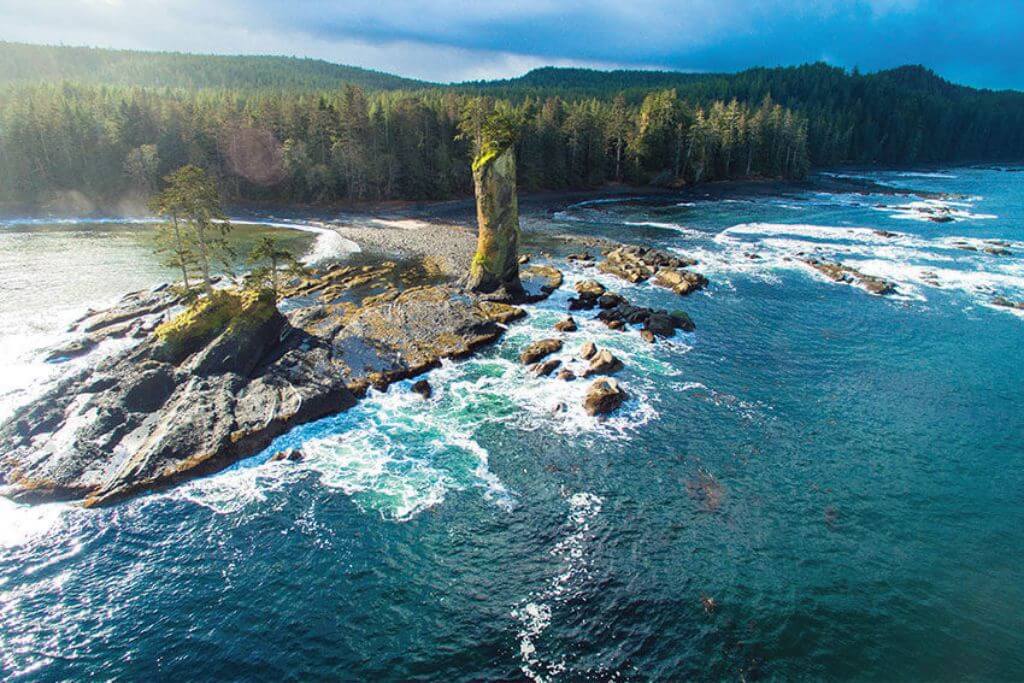
The Haida Gwaii archipelago, which was formerly known as the Queen Charlotte Islands, is located off the coast of northwest British Columbia. Amazing surfing beaches, a World Heritage Site, natural hot springs, lush rainforests, and little towns may all be found there. Native Haida inhabitants live there; they were formerly referred to be the Pacific Northwest’s Vikings.
For those who put forth the effort, Haida Gwaii, a dagger-shaped archipelago of around 450 islands located 80 kilometers west of the coast of British Columbia, promises a magnificent adventure. Remote Gwaii Haanas National Park, which makes up the lower third of the archipelago, is the main draw here. The numerous rare species of flora and animals have long drawn attention, to the point where the term “Canada’s Galápagos” is now widely used. But it becomes clearer every year that the Haida culture gives the islands their true soul.
The few remaining portions of magnificent old-growth rainforests, where some of the largest spruce and cedars in the world can be found, are being protected by the Haida respect for the environment. Bald eagles, bears, and a variety of other animals can be found in this sparsely populated, wooded, and wet area. Sea lions, whales, orcas are common offshore in marine protected zones, and once-rare right whales and sea otters have also been seen.
Haida Gwaii History
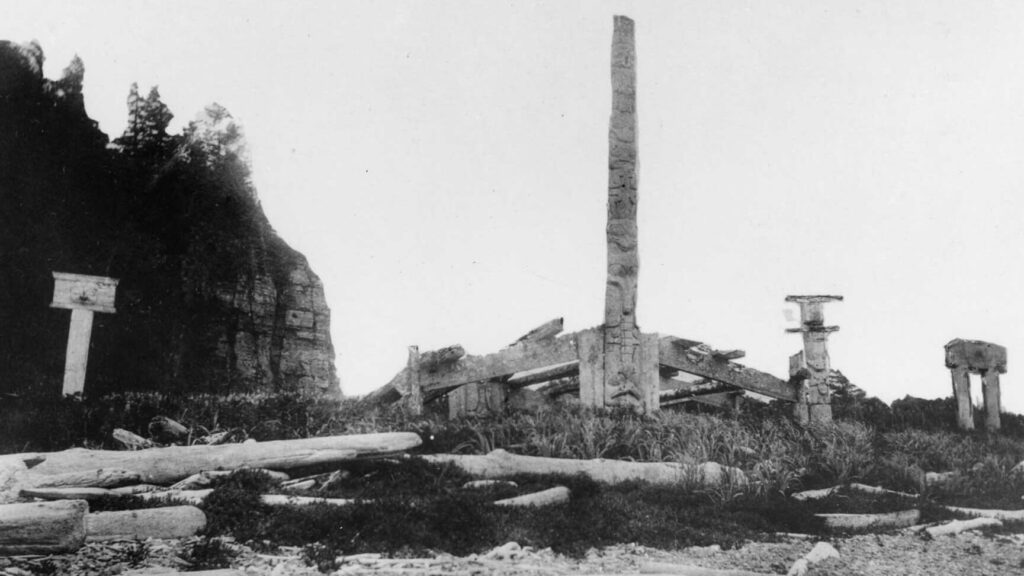
A collection of islands known as Haida Gwaii can be found off the coast of British Columbia. In the language of the Haida people, who see the archipelago as their ancestral home, the name translates to “Islands of the People.” This collection of islands was given the name Queen Charlotte Islands by Captain George Dixon in 1787 after one of his ships, which was later named after the wife of King George III. This name was used until 2010, when Haida Gwaii was adopted.
The Haida Gwaii has been inhabited by humans for between 6000 and 8000 years, according to archaeological data. The first European to see the islands was Juan Pérez (1774). James Cook paid them a visit in 1778. The islands were inhabited by the Haida nation, which possibly totaled 6000–8000 people. The population of the Haida was significantly reduced by European illnesses, reaching a low of 588 people in 1915, the greatest decrease of any tribe in the region. Currently, there are 5000 or so people living on Haida Gwaii as a whole.
The majority of residents in the towns of Old Massett, Skidegate, Sandspit, and Tlell, as well as the villages of Masset, Port Clements (incorporated 1982), and Queen Charlotte (incorporated 2005), were loggers, fishers, or miners until recently. Geologists, biologists, and tourists visit now to study and take in the stunning fjords, seabird, and sea lion populations, dark huge Sitka spruce and cedar forests, and ruins of deteriorating Haida totem poles that formerly stood along the western backbone of the islands.
Attractions and Things to see in Haida Gwaii
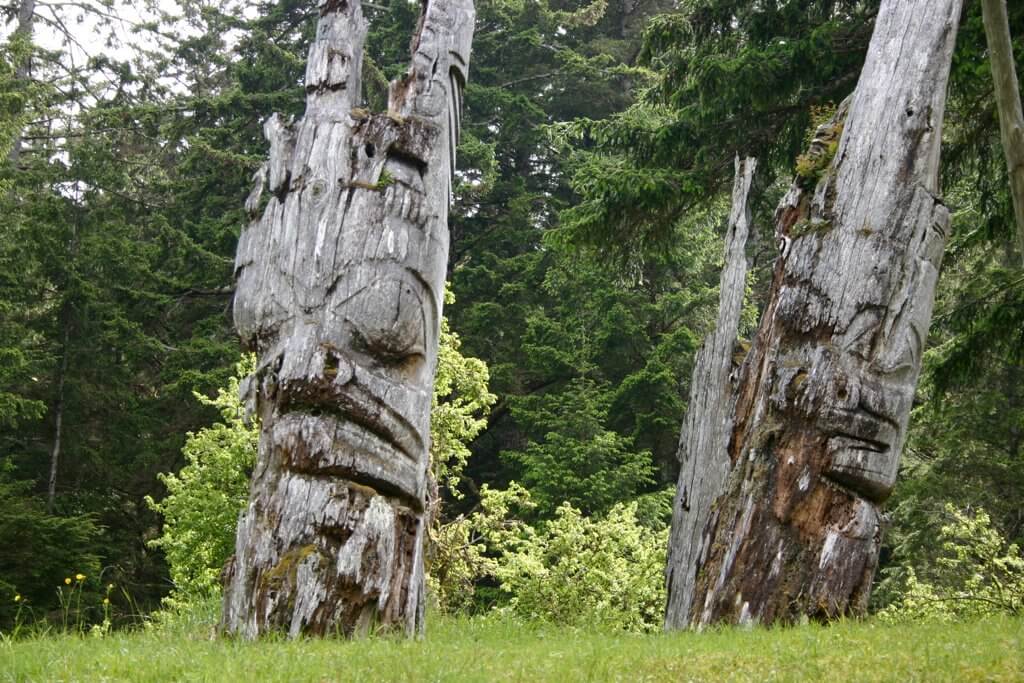
Huge plates moved through the Pacific Ocean from the South Pacific region to where the Haida Gwaii is today, forming the islands (see Plate Tectonics). Parts of the Haida Gwaii managed to avoid glaciation during the previous Ice Age, unlike the majority of Canada. This has contributed to the islands being an ecologically distinct region in Canada, along with the islands’ remoteness. There are several florae in this area that are either unique to Haida Gwaii or only found in far-off places like Japan.
The black bear is the largest mammal in North America, yet there are three other native bird species, and all native land mammals are sub-specifically distinct. Unfortunately, many native flora and animals are suffering due to invasive species. Due to the dangers posed by introduced predators, a number of seabird species are currently in danger (rats, squirrels, and raccoons).
On Anthony Island (SGang Gwaay), the former Haida hamlet of Ninstints has been designated a UNESCO World Heritage Site. Its magnificent totem poles are being protected to prevent further natural deterioration in an effort to preserve their status as a collection of global treasures.
Tourists are drawn to Haida Gwaii because of its natural and cultural attractions. Hikers are drawn to Naikoon Provincial Park because of its expansive beaches and bogs. The South Moresby region is the best destination in Canada to explore by sea because of its spectacular totem poles, marine life, hot springs, woods, and mountain views. The Gwaii Haanas National Park Reserve was established in 1993, and the Gwaii Haanas National Marine Conservation Area Reserve was established in 2010 to safeguard the area’s nearby marine waterways.
Read more 10 Stunning Places To Learn About Canada’s First Nations Culture
How to get there
You can travel to Haida Gwaii via ferry or by plane.
From the Vancouver International Airport, Air Canada operates daily flights to Sandspit, Haida Gwaii.
Additionally, Pacific Coastal Airlines operates daily direct flights to Massett, Haida Gwaii, via the Vancouver Airport’s South Terminal.
Direct seaplane flights from Prince Rupert to Massett and Queen Charlotte are provided by Inland Air.
Year-round ferry service is offered by BC Ferries between Prince Rupert and Skidegate, Haida Gwaii. Reservations are required for both foot and vehicle passengers for the approximately 8-hour journey. Another option is to use the inner passage, which travels from Port Hardy on Vancouver Island to Prince Rupert, where you connect and board the boat to Skidegate. The journey inside the passage takes about 15 hours.
Camping in Haida Gwaii
In Haida Gwaii, there are two sizable parks: Gwaii Haanas National Park on Moresby Island in the south and Naikoon Provincial Park on Graham Island in the north. There are no campgrounds at Pure Lake Provincial Park, Haida Gwaii’s third and only other park. It is located halfway between Masset and Port Clements.
Naikoon Provincial Park, Graham Island

The name of the park, Naikoon Provincial Park, is a perversion of the Haida term “Naikun,” which means “long nose” and was the Haida name for Rose Spit, one of the park’s most notable features. Tow Hill rises from the flat bogs of the Argonaut Plain at the mouth of the Hiellen River and is made of volcanic rock that hardened about 2 million years ago into faceted basalt pillars.
Tow Hill’s summit, which rises 435 feet above sea level, is practically the park’s highest point. The park’s interior is still unfinished. A lengthy expanse of sand beach, dunes, and surf may be found along Naikoon Provincial Park’s northern boundary. There are picnic tables, fire pits, outhouses, drinking water, and a covered kitchen shelter at Agate Beach Campground, which is close to Tow Hill. The campground is accessible all year. Along the park’s eastern coast, there are three other modest shelters. The distance from Skidegate to Naikoon Provincial Park is 22 miles (35 km).
- Misty Meadows Campground features picnic tables, piped water, a covered cooking shelter, and restrooms, all of which are close to the Naikoon Park administrative offices in Tlell, south of the Tlell River. There is a camping fee charged.
- Vehicle sites with views of the Delkatla Wildlife Sanctuary are available at the Masset Recreational Vehicle Park, which is situated on Tow Hill Road on the east side of Masset. There is access to electricity, TV hookups, flush toilets, and showers. The park is accessible all year long for a charge.
- On the west side of Queen Charlotte City, Hayden Turner Park has a few walk-in campsites, a good beachwalk, and several fairly basic vehicle/tent sites.
- The picturesque, well-kept campsites in Kagan Bay at the Kagan Bay Forest Service Recreation Site, located just west of Queen Charlotte City, with picnic tables and restrooms. On Honna Forest Service Road, the campground is situated 3 miles (5 km) west of the city.
Moresby Island Camping
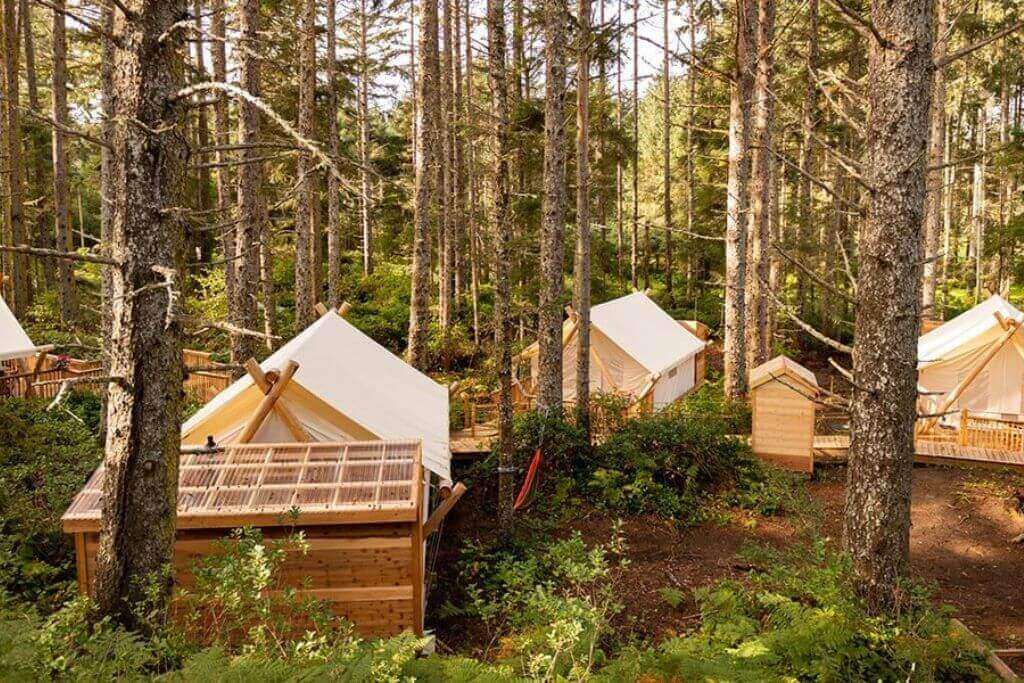
There are four Forest Service campgrounds on Moresby Island, which is across Skidegate Inlet. Drive 9 miles (15 km) east to Sandspit from the ferry landing at Alliford Bay to find them. From there, take the main road south, which will take you to two Forest Service campgrounds on the island’s east shore, which is more protected. On the lovely beach south of Sandspit, the Gray Bay Campground is 13 miles (21 km) southeast of Sandspit and offers two sites plus parking for automobiles. About 7 miles (11 km) further south, near Sheldens Bay, is a smaller motor campground.
The vehicle recreation site on Mosquito Lake, 27 miles (44 km) southwest of Alliford Bay and has a boat launch, a day-use area, and great trout fishing, is located there. Moresby Camp, a car camping, is located at the head of the Cumshewa Inlet, 4.5 miles (7 km) from Mosquito Lake. The Gwaii Haanas/South Moresby Park Reserve is best explored by small boats and kayaks from Moresby Camp, which also provides excellent Coho and Spring salmon fishing in the fall.
Gwaii Haanas National Park

There are no organized camping areas in Haida Gwaii. Since there is no road access to Gwaii Haanas National Park, which is overseen by both Parks Canada and the Council of the Haida Nation, there is no official camping there. In a contentious altercation that divided the island’s populace and public opinion across Canada and the globe, the park was created in 1987.
Even though Haida Gwaii has only 6,000 permanent residents, 3 million people voiced their support to have logging stopped here. At the height of the conflict, 72 Haida were detained and accused of criminal contempt of court, shocking the entire world. The formation of Gwaii Haanas resulted from the Canadian government passing a resolution in good faith that backed the Haida’s requests.
In Gwaii Haanas, camping at random is the norm. You can set up camp wherever you’d like, ideally on the sand, stone, or another surface where your presence will have the least negative influence. T’anuu Village, Gandla’kin (Hotspring), Ata Naa (House), Copper, Jeffrey, Rankine, Skung Gwaii (Anthony) Islands, and Slug Islet are all prohibited from camping. These locations are major bird breeding grounds or very delicate cultural sites. Ask at any of the Watchmen base camps if you’re unsure. Except for Windy Bay, or Hik’yaah, where the Haida Nation took a stand against logging in the 1980s, there is no camping allowed at any of the Haida Gwaii Watchmen sites in the park.
Through this article, we showed you a guide to camping in Haida Gwaii. Please give your feedback by leaving a comment below!
The related post Everything You Need To Know About Gwaii Haanas, Canada
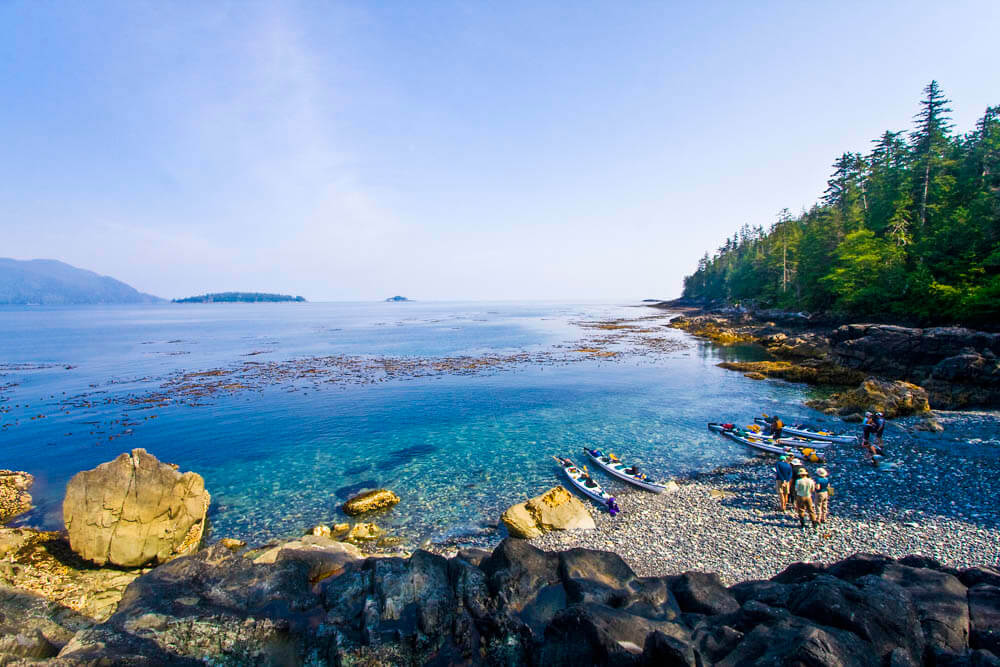
Thanks for sharing. I read many of your blog posts, cool, your blog is very good.